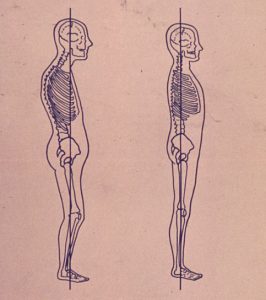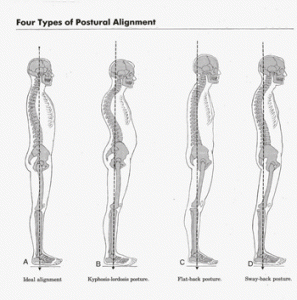Feeling Exhausted Is Not Normal – Here is Why
Find out the difference between being tired and exhausted
Why is it important?
You probably know the feeling all too well: you’re having a busy day and you feel tired. You just want sleep. You give in, take a brief nap, and wake up feeling refreshed. This is normal.
You may also know the following scenario: it’s the end of a long day and you feel completely wiped out. The exhaustion sits deep in your body and you feel as if you’ve been run over by a bus, or as if you’ve had ten rounds against Mike Tyson. You just want to fall into bed. Finally you do, but you wake up feeling just as exhausted. This is not normal.
You may also have experienced situations where you go to bed and you wake up in the morning feeling even more exhausted than you were the night before. This, again, is not normal.
In this blog post we will look at the difference between feeling sleepy and being exhausted. Why do we need sleep in the first place? What’s going on in the brain when we are sleepy? Why can we get exhausted to the point where sleep simply isn’t doing the trick? And what does this deep exhaustion have to do with posture?
Why do we sleep?
Scientists have found out that one of the main functions of sleep is rest and repair. While we are asleep, the body repairs cells and grows muscle tissue. It produces and regulates hormones, including insulin. Sleep promotes creativity, decision making, and learning. Chronic sleep deprivation can show some of the same symptoms as intoxication by alcohol. It increases the risk of cardiovascular disease, obesity, diabetes, and kidney disease. An adequate amount of sleep is therefore needed to keep your body and mind healthy!
During sleep, the body processes waste products, particularly in the brain. The brain literally cleans itself while we are asleep by flushing out waste. Scientists have discovered that this process works best when we sleep on our sides! This is important, as it highlights the importance of sleeping position on brain (and thus overall) health. More on this a bit later!
How does the brain regulate sleep and wakefulness?
In a typical day, humans spend around 16hrs awake and 8hrs asleep. The patterns of wakefulness and sleep are regulated by a small number of areas in the brain. Certain areas promote feeling awake; others promote sleep. These centres need to work together in a delicate balance.
The red arrows show the brain’s arousal centres which help maintain wakefulness. The signals they create get sent throughout the entire rest of the brain. There, they help the brain’s higher functions while we are awake. This includes speech, movement, focus, memory, etc. The arousal centres simultaneously suppress the sleep centres shown in blue. Similarly, the blue sleep centres suppress the red arousal zones so the body can go to sleep (and stay asleep). Most of these centres are located in an area of the brain called the hypothalamus and in the brainstem, i.e. the lowest part of the brain which connects down to the spinal cord.


How do we get tired or sleepy?
The exact mechanisms by which the brain regulates the switch from wakefulness to sleep aren’t fully understood yet. Certain brain chemicals (neurotransmitters) play a role, as does the body’s circadian rhythm. This internal body clock gets influenced by exposure to daylight; it, in turn, regulates body temperature, hormone and neurotransmitter release cycles, and therefore cycles of sleepiness and wakefulness. The important thing is that all these factors have to work together seamlessly. If they do, we are fully awake during the day, and remain fully asleep during the night. The sleep quality is good and we wake up refreshed. If they don’t work together seamlessly, certain sleep disturbances can occur – including difficulty falling asleep or staying asleep. Again, correct sleeping position can have a positive effect here as well. It can help you fall asleep without effort, stay asleep throughout the night, and wake up refreshed.
What is exhaustion?
Exhaustion is a sign that your body isn’t working at its best. It often comes with feeling lethargic, being unable to concentrate, having “brain fog”, and generally feeling like you have just been hit by a bus. Perhaps there is generalised body stiffness or achiness as well. It may feel as if the exhaustion sits deep in your bones. You may feel that sleep just isn’t going to do the trick. Or you wake up even more exhausted than you were before you went to bed.
Exhaustion and Posture
Symptoms such as chronic exhaustion, brain fog, etc. may be the result of changes to your posture. This can cause an increase in tension in the nerves of the spinal cord and brainstem. Neuroscientists Breig and Yamada carried out research into this. They found that changes to a person’s spinal alignment (and thus posture) can result in such an increase of tension. This is because the spinal cord runs inside the spine and therefore has to follow alongside any shape changes. Look at this picture.

The person on the right has “good posture”. The person on the left has “bad posture”. In each drawing, you can see the gravity line – a line drawn through the ear and straight down to the ground. Look how the head sticks out way in front of the line in the picture on the left. The person’s neck is strained forward, the upper back is rounded, there is too much curve in the lower back, the chest is collapsed in, the tummy sticks out, and the knees are bent. All of this is the result of spinal misalignments. Imagine a rubber band running along the back of the person, from head to hips. It is easy to see how it would have to get stretched to run across the altered spinal curves in the person on the left. In the person on the right, the rubber band would be much more relaxed, as the spinal curves are properly aligned and in proportion, the head sits above the shoulders (not in front). See how the chest isn’t collapsed in, the belly isn’t sticking out, and the knees aren’t bent? These are all signs of good alignment / good posture that we look for in our patients.

Now look at this picture. It shows four common types of postural alignment. The person on the left has “good posture”. The other three have different patterns of spinal misalignments, all resulting in “bad posture”. Again, each picture has the gravity line drawn in. In particular, you can see how much the head sticks out in front of the body in all but the ideal alignment picture.
When the head sticks out like this, it is in flexion. Breig found that neck flexion has the greatest effect on tension in the spinal cord. This tension can lead all the way up to the brain. In other words, postural changes such as these can mean that the brain is getting pulled at 24/7. In addition, the bodyweight is getting distributed differently when the spine is misaligned. It is much harder to stay upright – bones, muscles, and nerves have to work overtime to prevent the person from toppling over. All of this costs energy. The human spine is designed with ideal alignment in mind – if the curves are ideally aligned, the brain and body have to spend the least amount of energy on holding us upright. Anything out of alignment means an increase in energy cost just to stay upright.
This increase in energy cost can show up as chronic tiredness and exhaustion – the type that doesn’t go away with sleep.
Incidentally, research has also found that a stretched nerve functions differently. So constant tension on the spinal cord and brain stem may lead to altered function in terms of how signals are transmitted by the brain, and possibly also changes to hormone function and neurotransmitter production. Think back to the beginning of this post – the brain centres responsible for sleep and wakefulness are located in the brainstem. Constant tension in that area caused by postural misalignments may affect the function of the sleep / wakefulness centres.
Posture During Sleep
We said that the brain cleans itself during sleep. It does this best when we sleep on our side. It is important to understand here that this may, again, be due to changes to spinal alignment. When we are on our sides, the spine is supported better than it is in front or side sleeping. A spine that is supported better is aligned better – and this means less tension on the spinal cord / brainstem. This is why it is so important to watch what you are sleeping on.
Your mattress should be firm – the firmer the better. And your pillow needs to support your head and neck and put them in alignment with your spine. When everything is lined up just right, the spinal cord and brain can relax. It is easy to fall asleep, stay asleep, and wake up feeling refreshed.
We are always happy to offer advice on the best mattress and pillow for your body, so you can get a good night’s rest and feel refreshed in the morning.
Tired vs Exhausted
To sum up the difference between being tired and feeling exhausted:
Feeling tired is a normal function of the body. It is a signal that your body needs rest so that it can regenerate, carry out tissue repair, and clean out waste products from the brain. Feeling exhausted or like having been hit by a bus is not normal. It can be a sign of increased tension on the brain, caused by postural changes to your body. It is of course important to rule out other causes of exhaustion. When you first come to see us, we therefore take a detailed medical history to rule out that anything sinister may be going on. In particular, if the exhaustion is accompanied by fevers, night sweats, unintended weight loss, itchiness, or an increased tendency to bruise, it can be a symptom of a more serious underlying condition which needs to get investigated by different specialists. If the exhaustion is simply a result of “bad posture” and a symptom of your body working overtime at the task of staying upright, there is a good chance that Advanced Biostructural Correction™ can help you. Often, our patients find that they have more energy and are less exhausted as they undergo care.
If you would like to learn if Advanced Biostructural Correction™ is right for you please contact us for a free consultation.
References:
Breig, Alf. Adverse Mechanical Tension in the Central Nervous System: An Analysis of Cause and Effect. Almqvuist & Wiksell International, Stockholm, Sweden, 1978.
Healthy Sleep. https://healthysleep.med.harvard.edu/healthy/science/how/neurophysiology.
Lee H1, et al. The Effect of Body Posture on Brain Glymphatic Transport. Journal of Neuroscience. 2015 August 5;35(31). https://www.ncbi.nlm.nih.gov/pubmed/26245965.
Yamada S., et al. Symptomatic Protocols for Adult Tethered Cord Syndrome. Neurological Research. 2004 Oct;26)7_:741-4. https://www.ncbi.nlm.nih.gov/pubmed/15494115
Images:
Healthy Sleep.
Wikimedia Commons.



